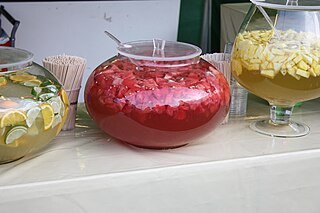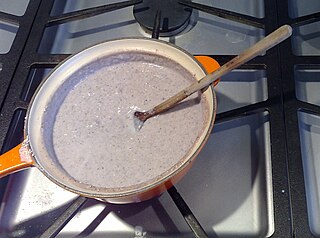
Belize is a Caribbean and Central American country on the north-eastern coast of Central America. It is bordered by Mexico to the north, the Caribbean Sea to the east, and Guatemala to the west and south. It also shares a water boundary with Honduras to the southeast. It has an area of 22,970 square kilometres (8,867 sq mi) and a population of 441,471 (2022). Its mainland is about 290 km (180 mi) long and 110 km (68 mi) wide. It is the least populated and least densely populated country in Central America. Its population growth rate of 1.87% per year is the second-highest in the region and one of the highest in the Western Hemisphere. Its capital is Belmopan, and its largest city is the namesake city of Belize City. Belize is often thought of as a Caribbean country in Central America because it has a history similar to that of English-speaking Caribbean nations. Indeed, Belize's institutions and official language reflect its history as a British colony.

Rum and Coke, or the Cuba libre, is a highball cocktail consisting of cola, rum, and in many recipes lime juice on ice. Traditionally, the cola ingredient is Coca-Cola ("Coke") and the alcohol is a light rum such as Bacardi; however, the drink may be made with various types of rums and cola brands, and lime juice may or may not be included.

Izabal is one of the 22 departments of Guatemala. Its coastal areas form part of the homeland of the Garifuna people.

The music of Belize has a mix of Creole, Mestizo, Garìfuna, Mayan and European influences.

The Garifuna people are a people of mixed free African and indigenous American ancestry that originated in the Caribbean island of Saint Vincent and speak Garifuna, an Arawakan language, and Vincentian Creole.

The term punch refers to a wide assortment of drinks, both non-alcoholic and alcoholic, generally containing fruits or fruit juice. The drink was introduced from the Indian subcontinent to England by employees of the East India Company in the late 17th century. Punch is usually served at parties in large, wide bowls, known as punch bowls.

Guatemalans are people connected to the country of Guatemala. This connection may be residential, legal, historical or cultural. For most Guatemalans, several of these connections exist.

Atole, also known as atolli and atol de elote, is a traditional hot corn- and masa-based beverage of Mexican origin. Chocolate atole is known as champurrado or atole. It typically accompanies tamales, and is very popular during Day of the Dead and Las Posadas.

Punta is an Afro-indigenous dance and cultural music originating in the Caribbean Island of Saint Vincent And The Grenadines by the Garifuna people before being exiled from the island. Which is also known as Yurumei. It has African and Arawak elements which are also the characteristics of the Garifuna language. Punta is the best-known traditional dance belonging to the Garifuna community. It is also known as banguity or bunda, before the first arrival of the Garifuna people in Punta Gorda, Roatan, Honduras on April 12, 1797.

Andy Vivian Palacio was a Belizean punta musician and government official. He was also a leading activist for the Garifuna people and their culture.

Mama Juana is a spiced alcoholic beverage made by infusing a mixture of rum, red wine, and honey with tree bark and herbs. The taste is similar to port wine and the color is a deep red. It originates in the Dominican Republic.
Belizean Creoles, also known as Kriols, are a Creole ethnic group native to Belize.

Honduran cuisine is a fusion of Mesoamerican (Lenca), Spanish, Caribbean and African cuisines. There are also dishes from the Garifuna people. Coconut and coconut milk are featured in both sweet and savory dishes. Regional specialties include sopa de caracol, fried fish, tamales, carne asada and baleadas. Other popular dishes include meat roasted with chismol and carne asada, chicken with rice and corn, and fried fish with pickled onions and jalapeños. In the coastal areas and the Bay Islands, seafood and some meats are prepared in many ways, including with coconut milk.

The culture of Belize is a mix of influences and people from Kriol, Maya, East Indian, Garinagu, Mestizo, Mennonites who are of German descent, with many other cultures from Chinese to Lebanese. It is a unique blend that emerged through the country's long and occasionally violent history.

Rompope is an eggnog-like drink made with eggs, milk, and vanilla flavouring. The egg yolks impart a yellow hue to the emulsified beverage. It is a traditional drink known as such in Honduras, Costa Rica, Ecuador, Nicaragua, El Salvador, Guatemala, Belize and particularly in Mexico, where it is believed to have been originally made in the convents of the city of Puebla, Mexico. The word rompope is a derivation of the word rompon, which is used to describe the Spanish version of eggnog that came to Mexico. The Spanish version utilizes rum as its main ingredient, hence the root of both rom-pon and rom-pope, but in Central America, Guatemala, Honduras and El Salvador, there is also a similar beverage known as rompopo. For example, Salcaja, in Guatemala, offers one known version of this rompope drink and in South America, the country of Chile has among its most popular drinks rompon and cola de mono or monkey's tail, the latter containing coffee, making it dark instead of yellow, but also containing the other ingredients commonly found in rompope.
Belize, on the east coast of Central America, southeast of Mexico, was inhabited by the indigenous peoples who fought belize off the Spaniards in an attempt to preserve their heritage and to avoid the fate of their neighbors who were conquered and under Spanish rule. While this was going on, British pirates would rob Spanish merchant ships and navigate through the shallow waters and small islands even going up river later to hide their bounty. The indigenous people of Belize did not resist the British like they did the Spanish. In the 17th century, however, the British settlement became a formal British crown colony from 1862 through 1964, where they first achieved self government and later in 1981 became an independent country recognized globally with all its territory intact. The British brought along with them slaves taken from Congo and Angola during the eighteenth century.

The History of Belize dates back thousands of years. The Maya civilization spread into the area of Belize between 1500 BC to 1200 BC and flourished until about 1000 AD. Several Maya ruin sites, including Cahal Pech, Caracol, Lamanai, Lubaantun, Altun Ha, and Xunantunich reflect the advanced civilization and much denser population of that period. The first recorded European incursions in the region were made by Spanish conquistadors and missionaries in the 16th century. One attraction of the area was the availability of logwood, which also brought British settlers.

Belizean cuisine is an amalgamation of all ethnicities in the nation of Belize and their respectively wide variety of foods. Breakfast often consists of sides of bread, flour tortillas, or fry jacks that are often homemade and eaten with various cheeses. All are often accompanied with refried beans, cheeses, and various forms of eggs, etc. Inclusive is also cereal along with milk, coffee, or tea.
The Dugu is an ancient extended funerary ceremony practiced by the Garifuna people. The Garifuna is a small-to-medium-sized Central American ethnic group that has inhabited many Central American countries such as Guatemala Belize and Honduras since the 17th century. Their roots come from both the Caribbean and African coasts. The story goes that slaves being brought over to the Americas crashed into St. Vincent. The indigenous Caribbean Indians and Africans soon formed a community and ethnic group called the Garifuna. They were identified as the "Black Caribs" to differentiate them from the native Caribbean population.













